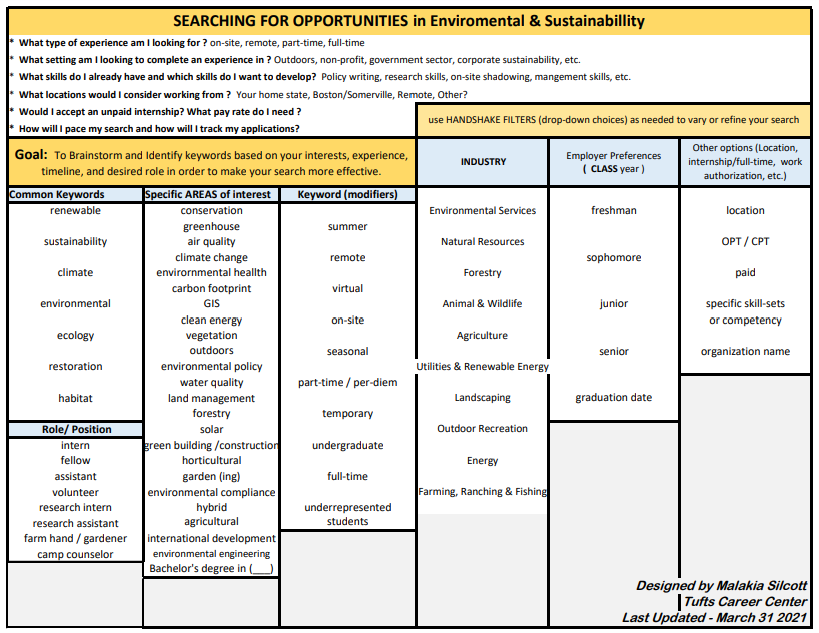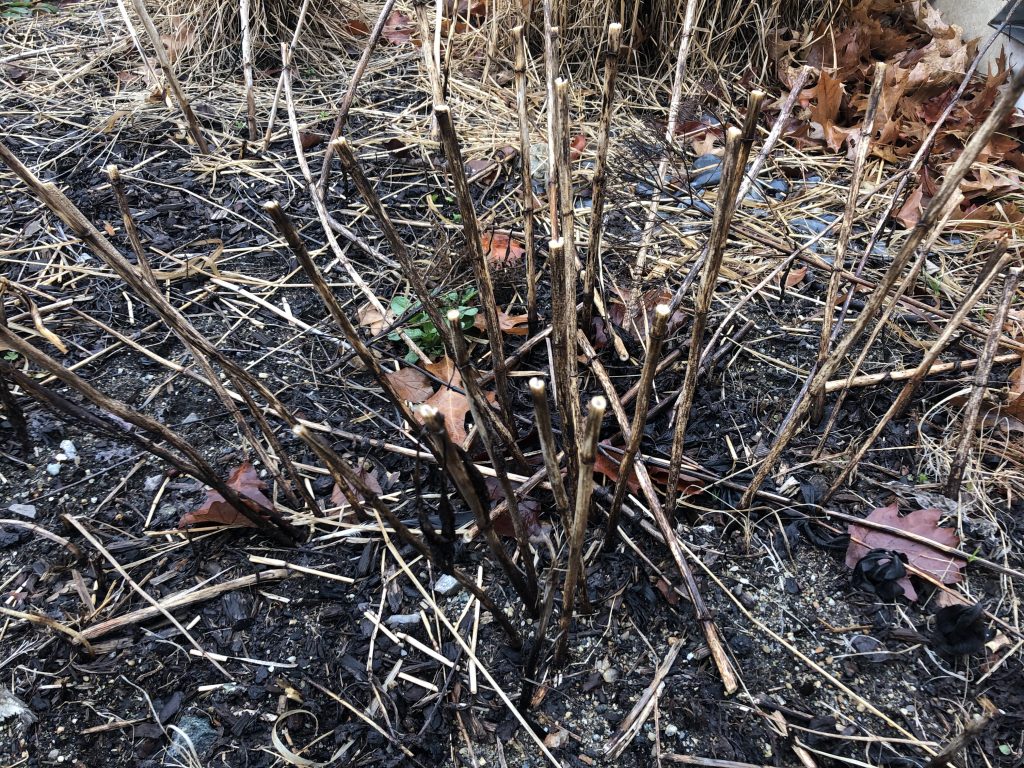My Sites
Log in to create or edit your sites.
IMPORTANT SERVICE ANNOUNCEMENT: Content freeze 7am June 19th until 7am June 23rd. Read more here.
Need Help? Email edtech@tufts.edu
Site-Wide Activity
-
Jeannie wrote a new post on the site SMFA Graduate Program Blog 4 years, 1 month ago

-
Susanna R. Berman wrote a new post on the site Praxis 4 years, 1 month ago
Protecting Displaced Women and Girls during a Pandemic: A Conversation with Devon Cone
 Protecting Displaced Women and Girls during a Pandemic: A Conversation with Devon Cone The following is an edited version of a conversation […]
Protecting Displaced Women and Girls during a Pandemic: A Conversation with Devon Cone The following is an edited version of a conversation […] -
Taritree Wongjirad wrote a new post on the site 4 years, 1 month ago
Paul presented his work in his thesis, “Generating Images of Neutrino Interactions in Liquid Argon Time Projection Chambers using Neural Networks.”
Congrats! And good work, Paul!
-
Ariana Hajmiragha wrote a new post on the site Graduate Blogs 4 years, 1 month ago
By Abigail Epplett, M.A. student in Museum Education
As an undergraduate, you likely had classes that were taught in part by a teaching assistant or TA. They were most likely a graduate student who took […]

-
Katherine Morley wrote a new post on the site What's New @ HHSL 4 years, 1 month ago
[Content Warning: race-based violence against BIPOC, particularly Asian communities]
May marks the start of Asian Pacific American (APA) Heritage Month in the United States. While celebrating […]

-
Linda Borghesani created the site Human Factors Capstone Project 4 years, 1 month ago
-
Ann Ward wrote a new post on the site CivicGreen 4 years, 1 month ago
Environmental Education
 Definition: Environmental education (EE) provides a foundation for building awareness andRead More
Definition: Environmental education (EE) provides a foundation for building awareness andRead More -
Lisa M. Freeman, DVM, PhD, DACVIM (Nutrition) wrote a new post on the site Petfoodology 4 years, 1 month ago
Out of options? What to do if your pet’s food is out of stockCOVID-19 has caused turmoil in people’s lives this past year, but it has also had an impact on our pets’ lives, most recently because of some popular pet foods being temporarily out of […]
-
Margaret E. Brosnan created the site 4 years, 1 month ago
-
Lori Campbell wrote a new post on the site Institute for Applied Research in Youth Development 4 years, 1 month ago
We are delighted to share the very good news that Jonathan Tirrell, Research Assistant Professor in E-P and a colleague in IARYD, will become co-Editor of the Journal of Character Education, the top journal in […]
-
Jill Rocca wrote a new post on the site Tufts University Department of Occupational Therapy 4 years, 1 month ago
Hello! This is my first
foray into writing something about my scholarship and research for the OT blog
and I was happy to have been asked and to do so. Five things you might want to
know about me:First, […]

-
Michaela Morse wrote a new post on the site Sustainability at Tufts 4 years, 1 month ago
This resource is also available on the Tufts Career Center, in the career community for Healthcare, Life Sciences & the Environment.
Keyword-Search-Terms-for-Environmental-Sustainability-Tufts-Career-CenterDownload

-
Michaela Morse wrote a new post on the site Sustainability at Tufts 4 years, 1 month ago
Green Practices and Sustainability Manager Carnegie Mellon University Pittsburgh, PA
Sustainability Project ManagerUniversity of MississippiUniversity, MS
Sustainability ManagerUniversity of Nebraska […]
-
Kristen Kaufman wrote a new post on the site Sustainability at Tufts 4 years, 1 month ago
DONATIONS
Each year during spring semester Move-Out, the Tufts Office of Sustainability collects donation items as part of its “Trash to Treasures” program. The purpose of Trash to Treasures is to divert sal […]

-
Sarah Passinhas-Bergman wrote a new post on the site What's New @ HHSL 4 years, 1 month ago
It is writing season! Between personal statements and thesis-writing, the realm of written word can be especially daunting. Plagiarism can occur in every part of academia, from grade school up to tenureship. It […]

-
Nikhil Nair wrote a new post on the site Synthetic Biology & System Bioengineering 4 years, 1 month ago
Debika and Athreya leave the group (Apr 30)Debika leaves the group for a second post-doc with Prof. Kelsi Sandoz (Cornell). Athreya graduated with a B.S. in ChE and accepted a job at Pfizer. Good luck to both of […]

-
Thomas Quinn wrote a new post on the site What's New @ HHSL 4 years, 1 month ago
Do you find yourself going from class assignment to class assignment, thinking “I wish I had a part-time job with flexible hours, and specifically over at Hirsh Library, because they all seem like such great […]

-
Erica wrote a new post on the site SMFA Graduate Program Blog 4 years, 1 month ago
Artist and educator Patty Chang joins writer Malvika Jolly for a conversation. We conclude with a poetry reading.
About this Event
Artist and educator Patty Chang joins writer Malvika Jolly for a con […]
-
Nicholas Dorian wrote a new post on the site https://sites.tufts.edu/pollinators 4 years, 1 month ago
About 30% of New England’s native bees build nests above ground. Besides bee hotels (many of which have their own issues), a great way to support these above-ground nesting bees is to leave dead plant stems […]

-
Hi Sharon, Yes, this information applies to stem-nesting bees globally. About 30% of solitary bees nest above ground, and those are the bees that you are supporting by leaving stems standing. Leaf-cutter bees (Megachile), small carpenter bees (Ceratina), resin bees (Heriades), and masked bees (Hylaeus) are just some of the bees that will nest in stems in your garden.
-
Hi Cathy, In general, you can distinguish year 1 and year 2 stems by how worn they are. Year one stems will have gone through an extra winter and therefore be a lot more tattered. You should cut the stems back to between 6-18” tall. Hope this helps!
-
Thank you! A question: Will it work to cut the stems down to the ground in the winter but prop the cut stems up somewhere as if they’re still on the plant?
-
Hi Melissa, Great question. If you would like to cut down the stems, you can bundle the stems together and place them in a sheltered spot. Effectively, this creates a bee hotel out of your homegrown plant stems. Once of the issues with bee hotels, however, is that a high density of nesting holes results in harmful parasites and pathogens building up in nests. For this reason, I recommend leaving the stems on the plant, where bees can nest at much lower densities and used nesting cavities naturally break down after a couple of years. Think: crowded apartment building vs. spacious countryside home.
-
-
Noted! I think we can make that happen.
-
Hi Trecia, thanks for the idea. We don’t currently have a pdf, but we might be able to make one.
-
Yes, you can cut back sunflower stalks just like the other plants.
-
I am not sure about zinnias specifically, but here’s how you can find out: after frost, cut zinnia stems according to the instructions in the blog post. If they are hollow, there’s a good chance bees will use them.
-
So glad you like our post, and thanks for all that you do to save native bees.
-
Yes, that’s correct! They particularly like the pithy stems of staghorn sumac for nesting.
-
Great question! The key part is that the open stem is exposed, but making a clean cut helps bees make a tight cap on the nest after it’s complete. Breaking stems with hands, as opposed to sharp shears, can also compromise the integrity of the nesting site, e.g. cracking/damaging stem. If you are making a cut on a stem on a woody plant, a clean cut also prevents the plant from getting infections.
-
That’s a good way of differentiating between different generations of stems–i.e. those produced in 2021 vs. 2022. You will want to leave each generation of stems standing for at least 2 years, and *not* cut them to different heights after the initial cutting.
-
Hi Nan, I am not aware of any resource listing hollow/pithy stems, though the ones I list in the article are a good starting place. Ultimately, it comes from experience–cut a stem from each plant in your garden and take notes! I don’t believe that Jerusalem artichokes are hollow stems–it will be very obvious. The bee larvae will not be free living in the stem. All of them be in distinct cells, wrapped either in mud, leaves, fuzzy plant hairs, flower petals, or sap/resin.
-
Coneflower stems *are* suitable for cavity-nesting bees. The seeds might be gone, even if the spiky seed head remains. Nevertheless, shake the seed heads in your garden in spring and you’ll have more coneflowers next year!
Here’s a nice resource if you’re not aware of it: https://xerces.org/sites/default/files/publications/18-014.pdf
-
Hi Elina,
Thanks for your comment! March is a rule of thumb to wait until spring–definitely leave your stems if the birds are still eating the seeds 🙂 The bees that will use your stems largely emerge by late-April, so you can leave them until then.
In the case of herbaceous perennials (those that die back each year/don’t make perennial woody stems), you can leave your stems standing indefinitely. This year, new fresh green joe pye weed stems will grow from the root stock.
Hope this clarifies things!
-
I am not aware of whether bees will nest in Chrysanthemum stems, but if you have other stems in the garden that are hollow, I think it’s okay if you cut the Chrysanthemums back.
-
Simply leaving your stems is fine, but bees require an opening in the stem in order to nest in it. Some of the stems in your garden might have been broken by ice and snow over the winter, but many of them might still lack an opening. By making clean cuts on your stems, you will definitely create many more nesting cavities for native bees.
-
Hello Bob! Yes–you can often tell if a bee has used a stem by whether or not the stem is plugged. For example, leaf-cutter bees (Megachile spp.) will plug with leaves whereas mason bees (Osmia spp.) will plug with mud. Keep in mind that bees are not the only insects that use cavities for nesting. Gentle solitary wasps like Isodontia spp. will readily use stems for nesting and they plug their cavities with grass and plant fibers. Hope you find some occupied cavities this year!
-
Hello Joe! Our native carpenter bees are important pollinators, and only one species is a nuisance–eastern Carpenter bees (Xylocopa virginica). They do not nest in woody stems in the garden. The carpenter bees that nest in your garden are small carpenter bees (Ceratina) and they are *much* smaller and easily overlooked.
The bigger, more conspicuous eastern carpenter bees will excavate nests in decks, eaves, siding. They are also important pollinators and players in our local ecosystems, and they are super gentle. To deter them from nesting in future years, however, you can cover up the hole with steel wool or caulk the entrance and paint over it. Absolutely please refrain from spraying chemicals.
-
Thank you Juliette! That’s great work on your part. Some of the weaker stems definitely don’t stay standing. Native bees definitely prefer stems that are standing. Ones that I’ve found to be particularly sturdy are wild bergamot, swamp milkweed, and mountain mint !
-
Glad to hear that you solved your wasp problem in an environmentally friendly way!
-
In general, no. Stems on the ground rot much more easily than standing stems.
-
In the wild, carpenter bees (Xylocopa) nest in dead trees/snags in fields and along wooded edges. The issue is that many untreated decks are perceived in the same way as dead trees to carpenter bees. You can discourage carpenter bees from nesting in your deck by plugging their entrance with steel wool/caulk or painting over the deck to make it less desirable to chew through.
-
-
Luciana d'Amone wrote a new post on the site AS&E Graduate Student Council 4 years, 1 month ago
GSC General Body Meeting – TODAY!!April 26th, 2021 6.15PM – new e-board elections
Meeting ID: 969 3643 0952
Passcode: 616410 - Load More

